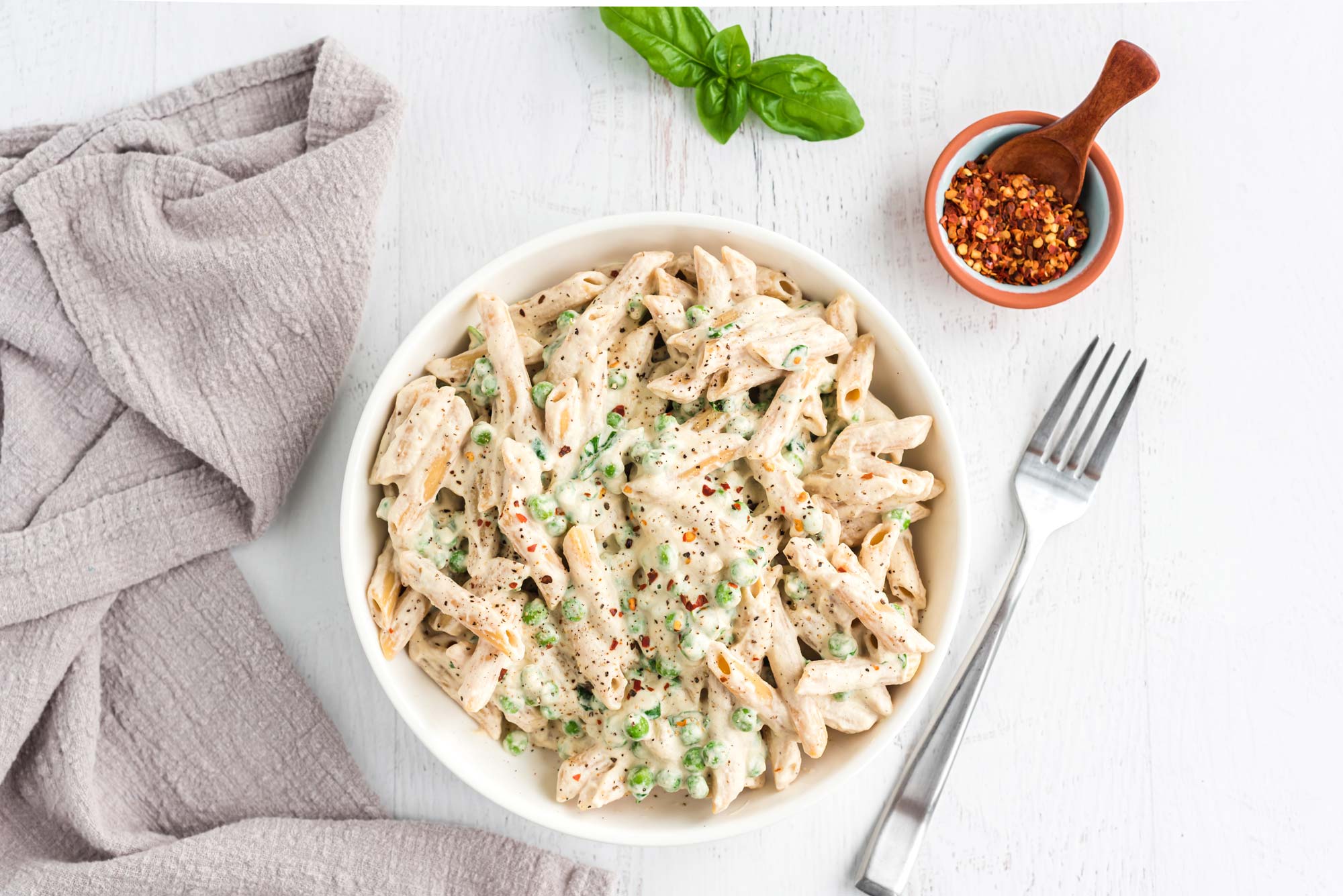Who doesn’t love pasta and noodles? Across the world, dough that’s shaped, boiled, and drenched in sauce or other liquid serves as the basis for some of our most iconic dishes. The word pasta comes to us via Italy, literally meaning “paste.” And as much as some of us may word-associate noodles with classic Italian cuisine, we can find noodle dishes, including plant-based pasta, from cultures worldwide.
While researching for this article, I was mildly crushed to discover that the story of Italian explorer Marco Polo bringing pasta back to Italy from China is almost certainly a legend, not historical fact. What is fact is that Asian cultures have been noodling around with noodles for thousands of years. And there’s evidence for pasta-making in China since around 3000 BCE. One archeological dig unearthed an actual bowl of millet noodles that was carbon-dated to 4,000 years ago. The bowl, which was buried under 10 feet of sediment, contained long, thin noodles that indicated great noodling skill. I can only imagine what circumstances caused that bowl to go uneaten for four millennia. I’m sure glad the archeologists weren’t hungry when they found it!
Italians and Pasta
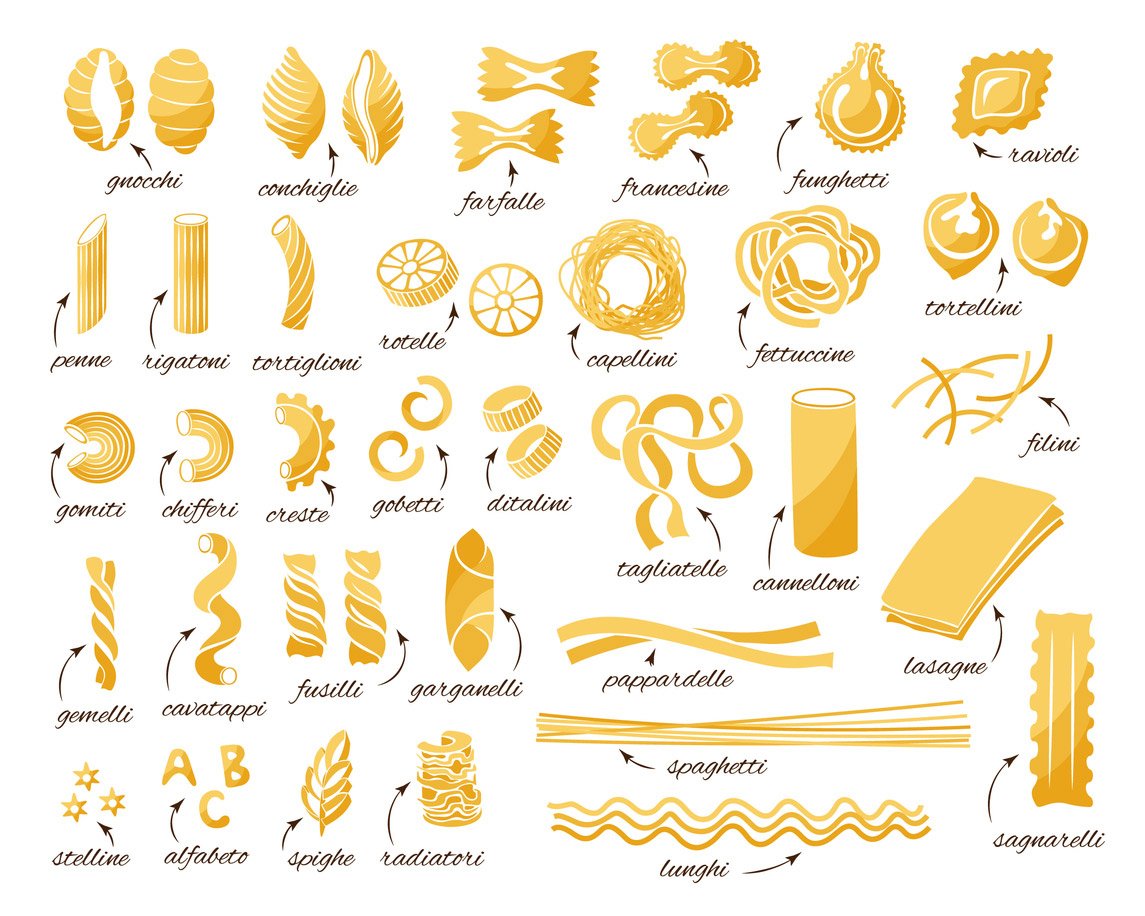
While the Italians may not have been the pasta founders of the world, they have been at it for a very long time as well. A painting on a 2,400-year-old Etruscan tomb from what is now central Italy appears to show people making pasta. Although, I’ve seen the image, and it is also possible that it’s depicting curls of steam rising out of the serving dish. In any case, the Italians are the undisputed masters of pasta taxonomy, coming up with cool names for every shape: spaghetti, macaroni, rigatoni, farfalle (literally “butterfly”), vermicelli (“little worms” — yum!), linguini (“little tongues”), orecchiette (“little ears”), and the alarmingly named strozzapreti, which literally translates to “priest-chokers.”
Italian pasta is almost always made from wheat. And the kinds of pasta held in highest culinary regard are those that have been formed from refined white flour that’s been stripped of its bran and germ. These white pastas are far from the healthiest kinds you can get, especially if the wheat is grown in the US, where if it isn’t organic, it’s likely to contain glyphosate and other pesticides.
History of Plant-Based Noodles
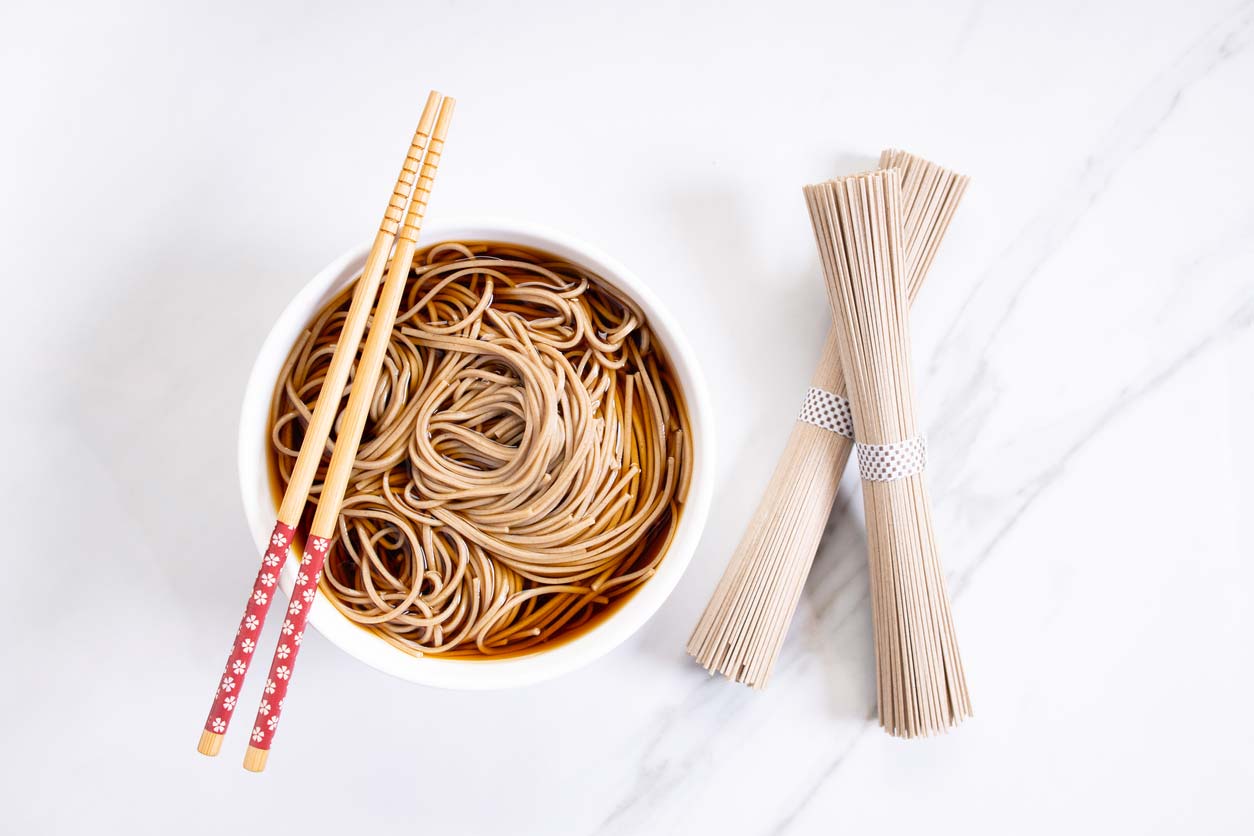
Asian cultures have the longest known history of noodle-craft using plant-based noodles: examples of modern fare include ramen, pad thai, pad see ew (a Chinese-influenced Thai dish similar to fried noodle dishes served in Singapore and Malaysia — how’s that for cultural mixing?), lo mein, cold sesame noodles, and many more. Asian noodles are made from a far wider variety of plant sources than just wheat, including rice, seaweeds, sweet potato, sorghum, millet, buckwheat, tapioca, and tofu.
Noodles check a lot of positive culinary boxes: they last a long time in the cupboard; they’re light and easy to store and transport; they’re easy to cook; they can be eaten hot or cold, and they’re incredibly versatile, taking on the flavor of whatever sauce or additions you serve them with.
Healthy vs Unhealthy Pasta
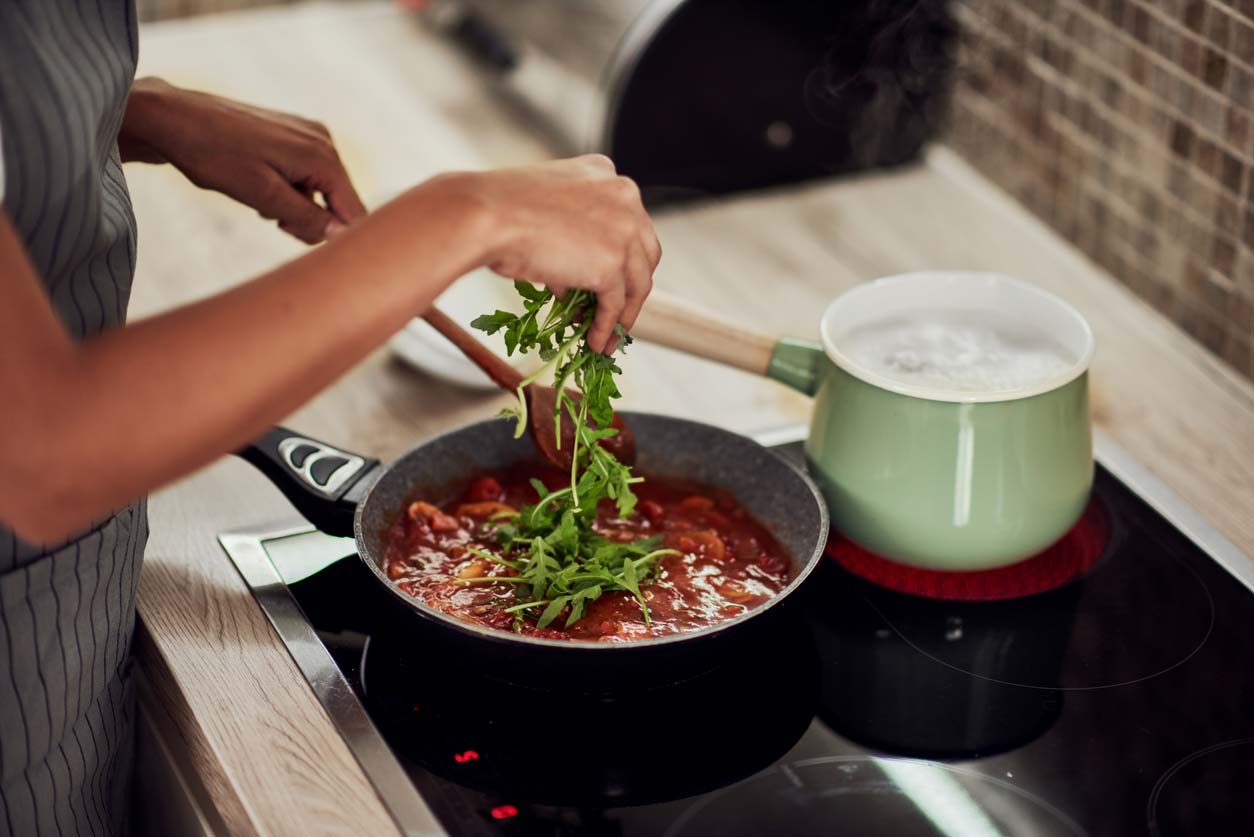
You can dress up your pasta however you like, which means that the toppings you serve can make much of the difference between a healthy noodle dish, and an unhealthy one. In the unhealthy category, look no further than the menu of any chain Italian restaurant: lots of cream and cheese, butter, and red and processed meats adorn many pasta dishes. They are also typically quite high in sodium.
You can create stunningly healthy pasta dishes by using plant-based sauces, spices, and vegetables. Your sauces can be as simple as a jar or can of tomato puree, or as fancy as a slow-simmered arrabbiata or puttanesca sauce with tons of stewed veggies and a rich helping of herbs and spices. If you’re going meat-free but wanting a “meaty” taste, you can also add small amounts of meat analogues, such as plant-based sausages and organic soy-based chicken or beef substitutes.
There are lots of commercially available pasta sauces. But the most widely sold brands are heavily salted and contain added sugar. They may also contain dairy in the form of parmesan cheese, whey, or butter. You’re much better off using a simple and naturally sugar-free sauce, or making your own so you can determine exactly what ingredients get included. Many-a-parent has discovered that a homemade pasta sauce is the perfect vehicle for sneaking “stealth” veggies into the diets of their picky eaters.
While the toppings and sides are the biggest determinants of the healthfulness of a pasta dish, the type of pasta also matters. The traditional wheat pastas tend to be the least healthy choices, while other plant-based pastas, including organic whole grain wheat, can provide a better nutritional profile and contain fewer pesticides. And with the explosion in the gluten-free market, more and more acceptable alternatives to classic spaghetti and macaroni are now available for consumers.
Best Types of Plant-Based Pasta and Noodles
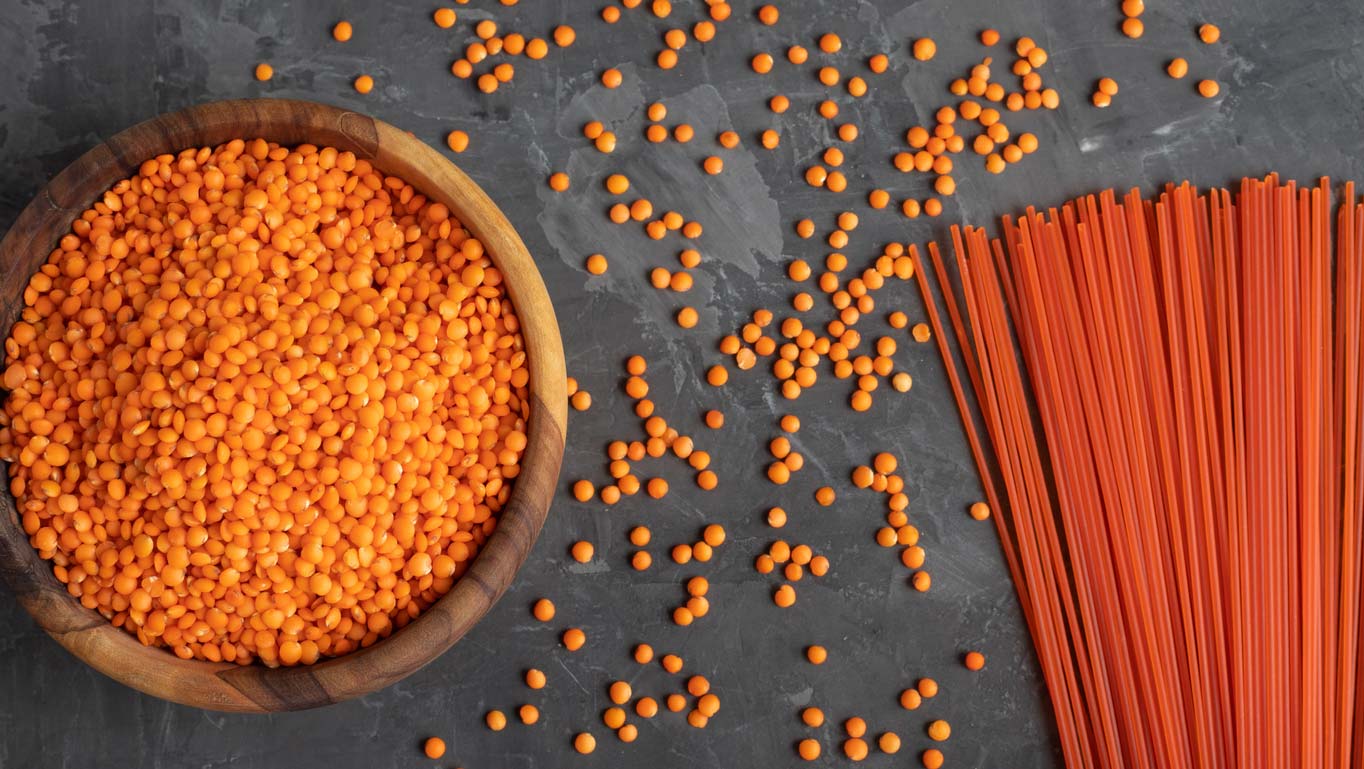
From a health perspective, the best types of plant-based pasta and noodles are made from whole grains or legumes. Because these are whole foods, rather than refined, they are rich in fiber and generally cause a slower, steadier rise in blood sugar than refined grains. They’re also often rich in nutrients like vitamins, minerals, and antioxidants. Whole grains, despite being vilified in the popular press as “bad carbs,” are nevertheless linked to lower risk of age-related illnesses, including cardiovascular disease and gum disease. If you aren’t allergic or sensitive to wheat, whole wheat pasta, especially organic, can also be an excellent choice. It has the added benefit of being “familiar” to picky eaters who may balk at pasta with a very different look, taste, and texture.
Pasta made from legumes such as chickpeas, mung beans, and green and red lentils also confer lots of health benefits. These foods are high in fiber and protein, as well as many vitamins and phytochemicals. Lentils are rich sources of folate and iron, as well as other important minerals such as magnesium, potassium, manganese, and zinc. They are also rich in polyphenols, which partially explains why diets rich in lentils are protective against diabetes, cancers, obesity, and cardiovascular disease.
Quinoa and corn are also commonly substituted for wheat in gluten-free pastas. And brown rice pastas are widely available in natural foods stores, Asian markets, large supermarket chains, and of course also online.
Asian Plant-Based Noodle Options
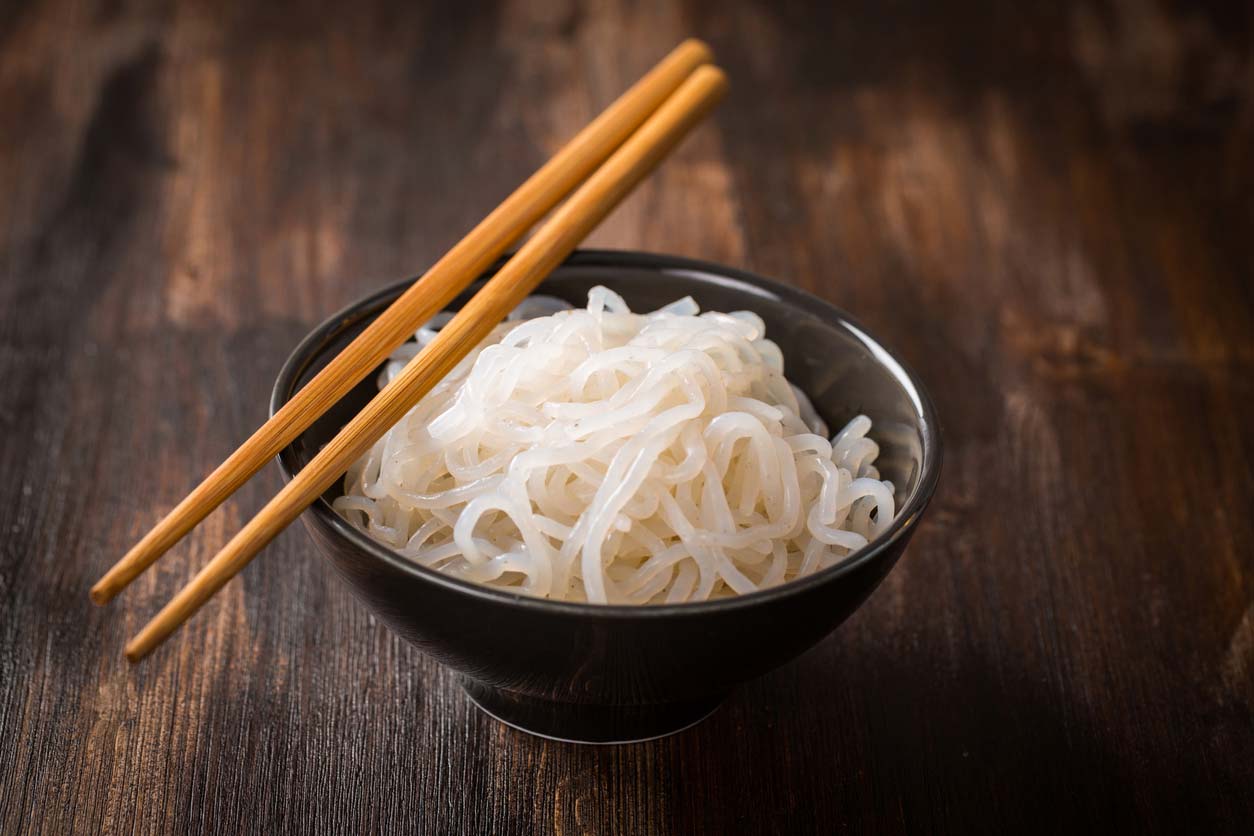
In addition to spaghetti and the vast array of colorfully-named Italian pastas, there are several types of Asian noodles with different properties and uses. Soba is made from buckwheat, which despite its name is not related to wheat at all. (It’s actually not a grass at all, but is botanically related to rhubarb and sorrel.) If you’re gluten-intolerant, check the label, as most soba noodles contain wheat flour as the first ingredient. Make sure you’re getting noodles made from 100% buckwheat flour.
Shirataki noodles are made from the flour of the root of the konjac plant and contain a lot of a very healthy fiber called glucomannan. Glucomannan can absorb huge amounts of water and acts as a powerful prebiotic in your gut, where it nourishes your good bacteria. Shirataki noodles are also almost entirely free of calories, and in fact are 97% water by weight, which makes them a favorite of those trying to lose weight. A fun thing about shirataki is their name, which means “white waterfall” in Japanese.
Rice noodles are ubiquitous in Thai dishes such as pad thai. They are gluten-free, and if made from brown rice, contain a modest helping of fiber. They come in many different lengths and widths and go well with Asian broths and soups, as well as healthy stir-fries.
Glass noodles, also known as cellophane noodles, get their name from their appearance when cooked: at which point, they’re translucent. They’re typically made from the starch of mung beans, potatoes, or sweet potatoes. You may have encountered glass noodles in spring rolls, hot pots, soups, and salads. They’re highly processed, and not rich in nutrients. But they can be a pleasant carrier for more nutritious sauces.
To avoid pesticides, try to find organic versions of these pastas and noodles whenever possible.
Noodle Alternatives
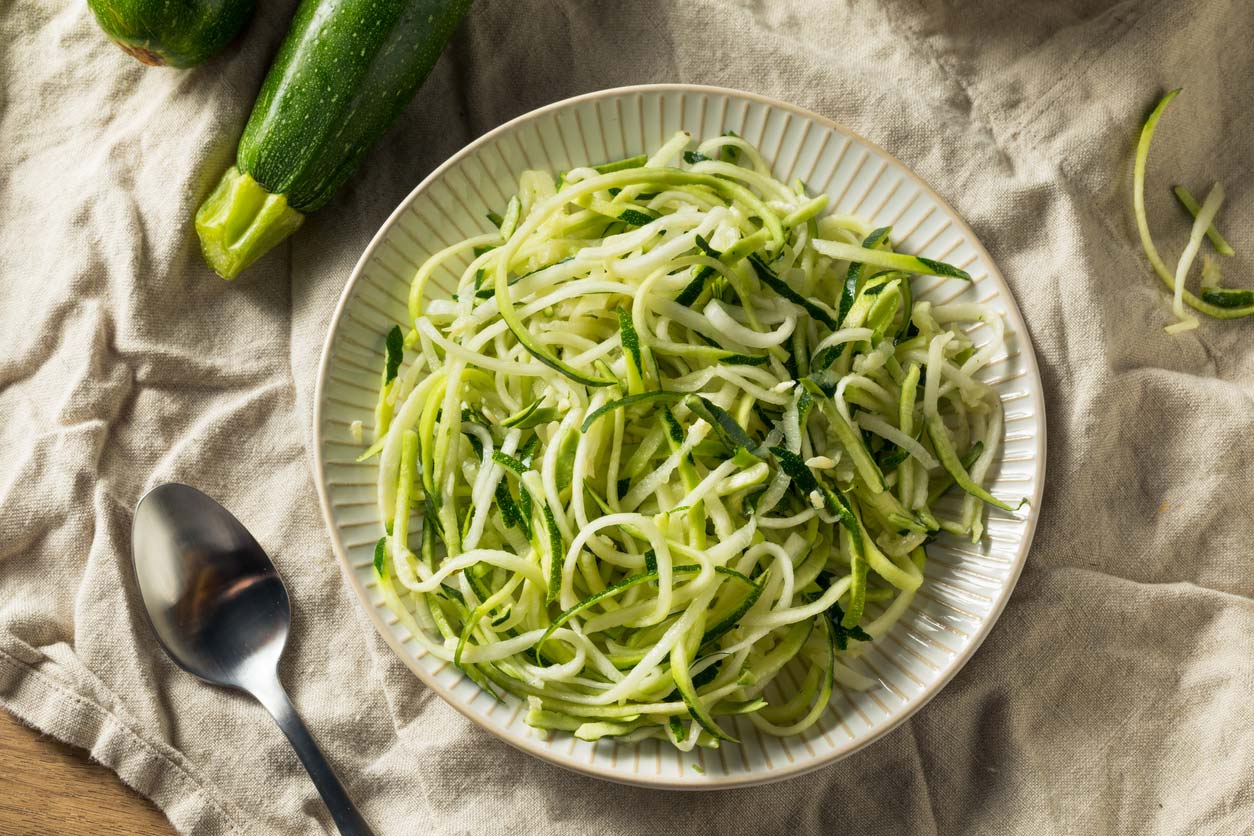
Even the healthiest noodles are still processed foods. The whole grains are broken and ground into a fine powder before being mixed with water. And so they tend to be calorically dense (except for shirataki) and may spike blood sugar in those with diabetes or prediabetes. If you’re committed to eating as many whole foods as you can, or if you prefer a largely raw diet, you don’t have to forswear noodles forever. You can also make plant-based pasta and noodles out of vegetables with a spiralizer. Common vegetables used for this purpose include zucchini, which lends its first letter to the dish, “zoodles,” as well as other summer or winter squash, sweet potatoes, and carrots. Zucchini and other summer squash spiralize easily, while you might need a more heavy-duty spiralizer to handle raw sweet potato or butternut squash. And, don’t forget spaghetti squash, which is exactly as it sounds. Once it’s baked, there’s no spiralizer necessary, just a fork to remove the squash’s abundant “spaghetti” strands.
Pasta Types to Avoid
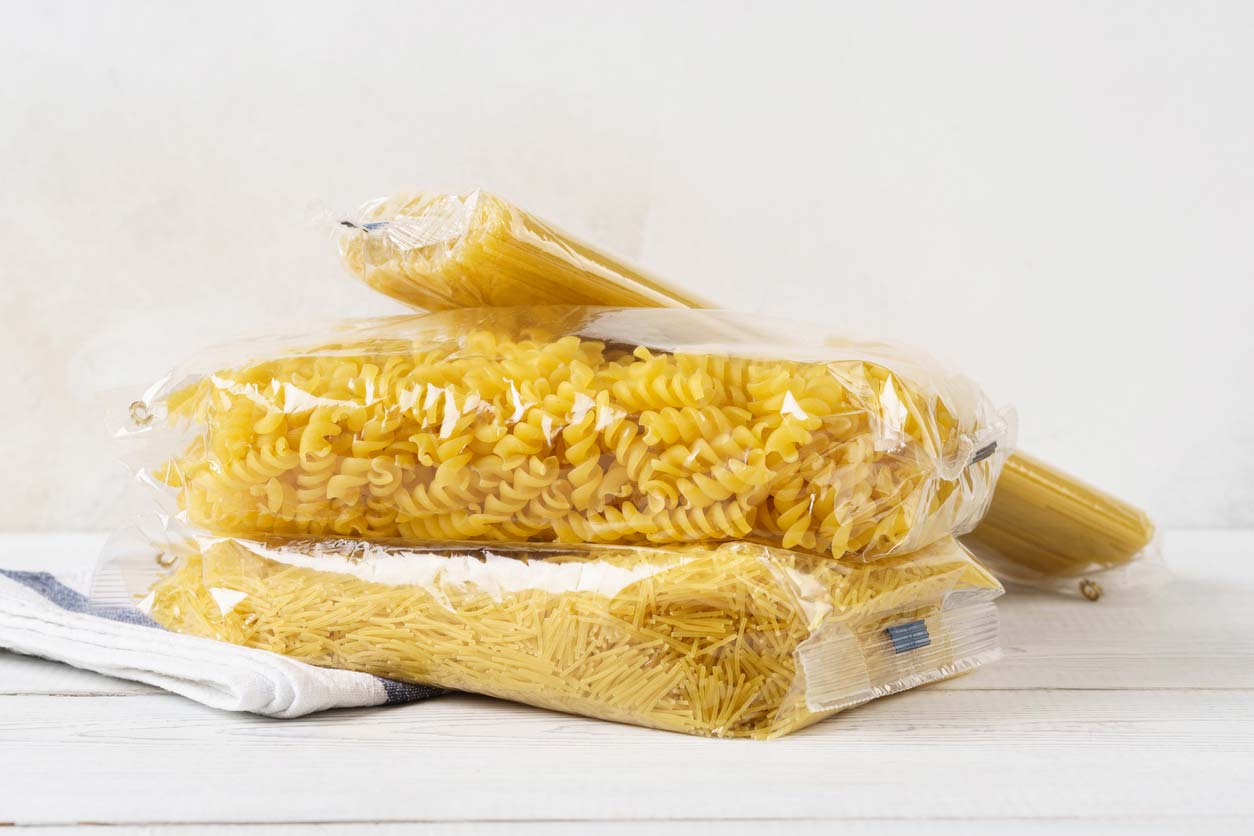
The least healthy pasta is, alas, the most commonly available in stores and restaurants: wheat pasta made with refined white flour. The refined starches and carbohydrates in white pasta actually act a lot like sugar once you digest them. And the good stuff found in wheat — the vitamins, minerals, healthy oils, and fiber — are found almost exclusively in the bran and the germ, both of which are removed in the refining process. The lack of nutrients and the high speed of absorption of refined carbohydrates makes white pasta a fairly empty calorie food. As such, they can contribute to disease rather than helping prevent it the way whole grains can. Of course, some brands try to compensate for the lack of nutrition in the products by “fortifying” them. Some pastas have B vitamins and iron added in. But fortified nutrients act more like supplements than the same nutrients found in foods in their natural and whole state.
To avoid pasta made from refined white flour, here’s the list of synonyms to avoid:
- Semolina
- Durum wheat flour
- All-purpose flour
- Wheat flour
Plant-Based Pasta and Noodle Recipes
If you’re a lover of health, and of all things noodles, then you’re in the right place. From Legume Pasta with Spinach and Cashew Bechamel to Spaghetti Squash with Garlic, Tomato, and Mushroom Sauce to Miso Shiitake and Bok Choy Soup with Shirataki Noodles, we have you covered. It’s a healthy noodle extravaganza, and you’re invited! Let us know which plant-based pasta recipes below become your new, go-to favorites.
1. Legume Penne with Spinach and Cashew Bechamel

Serve this to your friends and family, and you don’t have to tell them it’s a healthy vegan pasta dish! Chances are, they’ll think you made it like a traditional-style white sauce with cream and butter. The trick to perfecting the cashew bechamel is soaking the cashews and blending them until super smooth. The creamy bechamel with the legume pasta, crunchy peas, and earthy spinach will have everyone coming back for more!
2. Buffalo Pasta Salad

Want the sauce without the wings? This plant-based pasta dish has all the flavor in addition to a ton of fiber, plenty of nutrition, and just as much protein, as the meat-based version. Enjoy it by itself, serve as an appetizer, or savor it alongside a veggie burger.
3. Lentil Minestrone
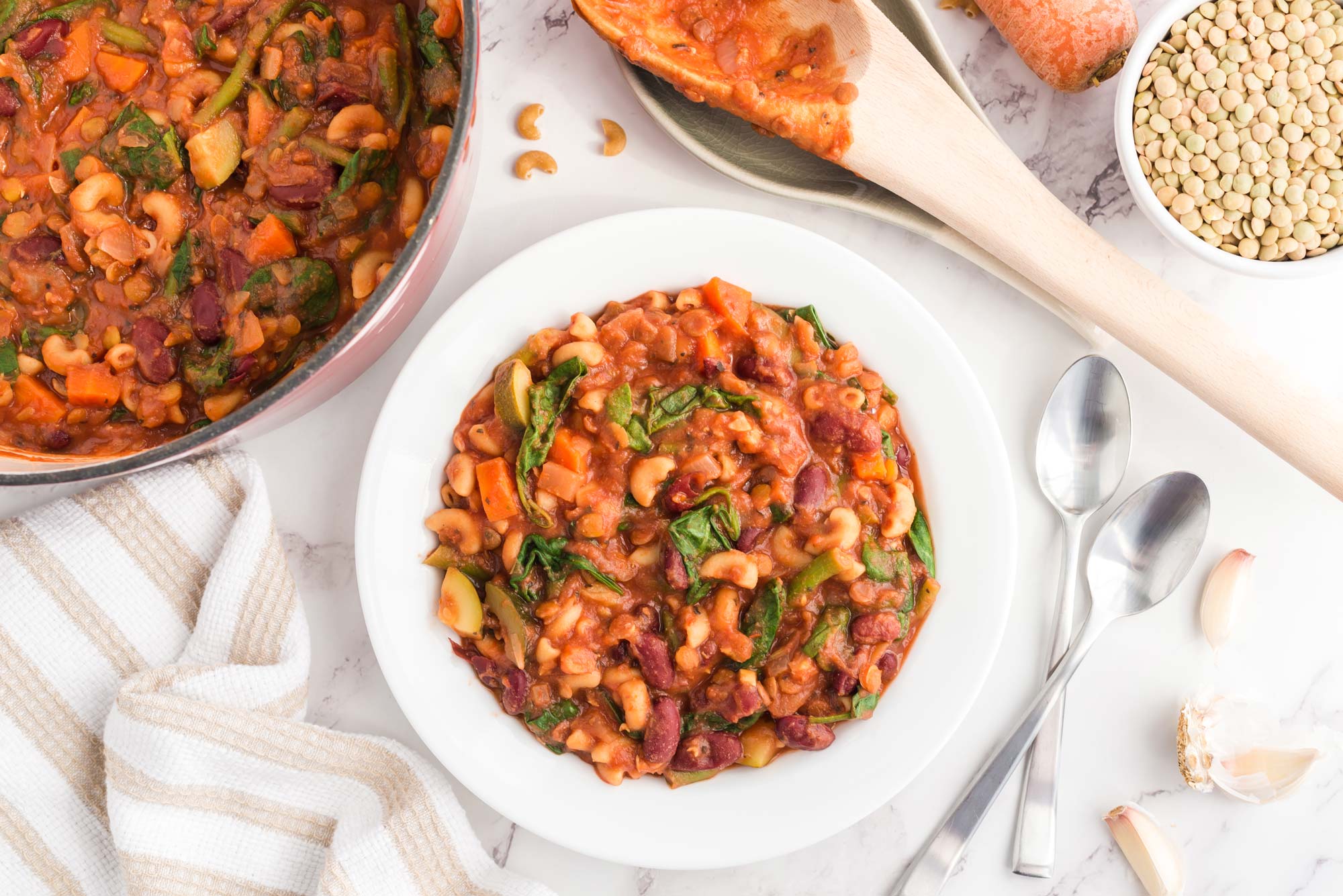
This Lentil Minestrone has all of the elements of a healthy soup — phytonutrient-filled vegetables, fiber-filled whole-grain pasta, healing herbs and spices, and protein-powered beans. Pro tip: Make extra and freeze in freezer-safe containers so that you can enjoy it for months to come!
4. Quinoa Spaghetti with Basic Red Tomato Sauce and Lentil Quinoa Meatballs
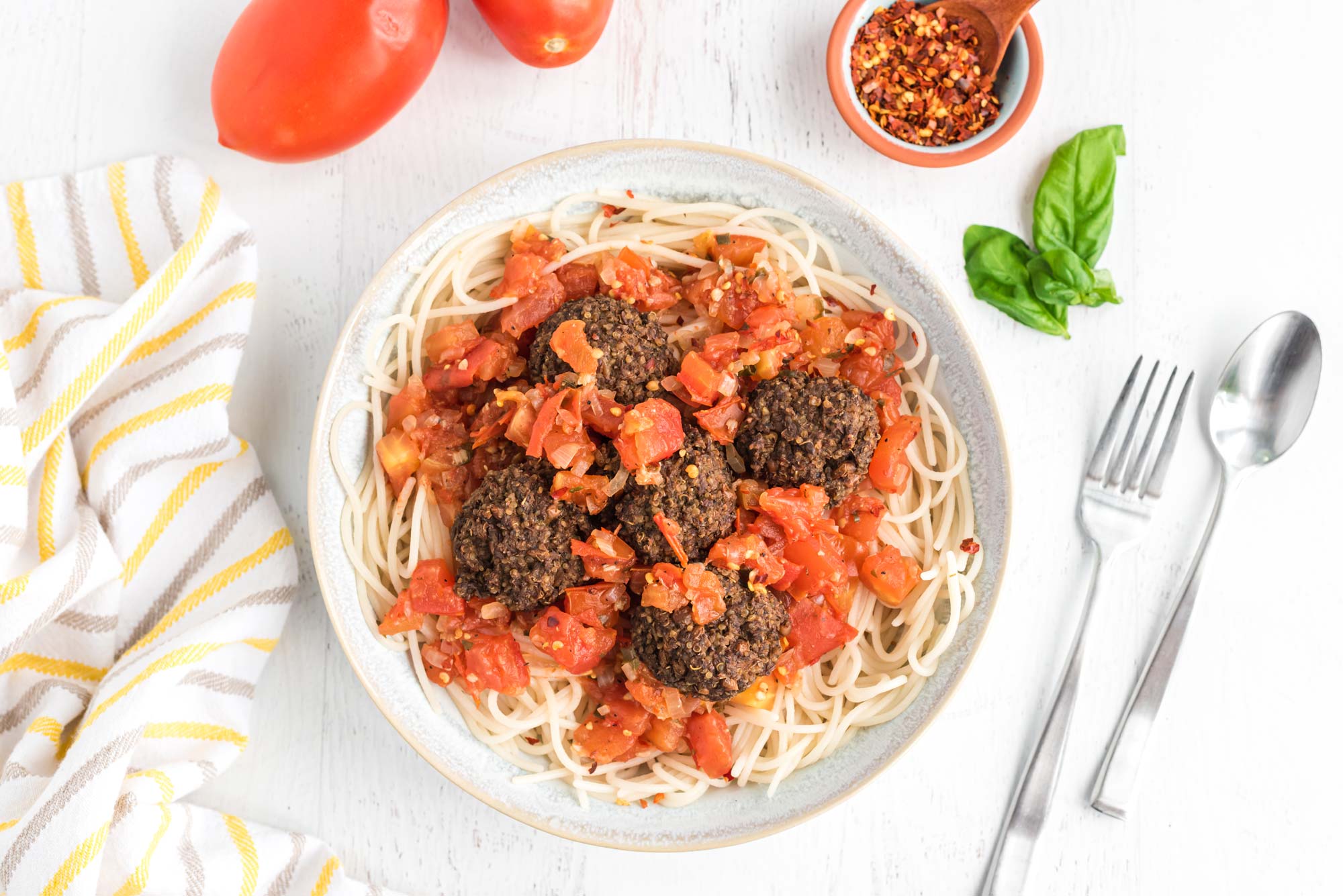
The tiny quinoa seed is not only a nutritional powerhouse with its protein, fiber, iron, and B vitamins, but it can also be used in so many ways. In this recipe, it’s the pasta and the meatballs! And, while making your own tomato sauce might sound daunting, our Basic Red Tomato Sauce is actually quite simple. Pro tip: Double the sauce so you have extra for dipping your meatballs!
5. Spaghetti Squash with Garlic, Tomato and Mushroom Sauce
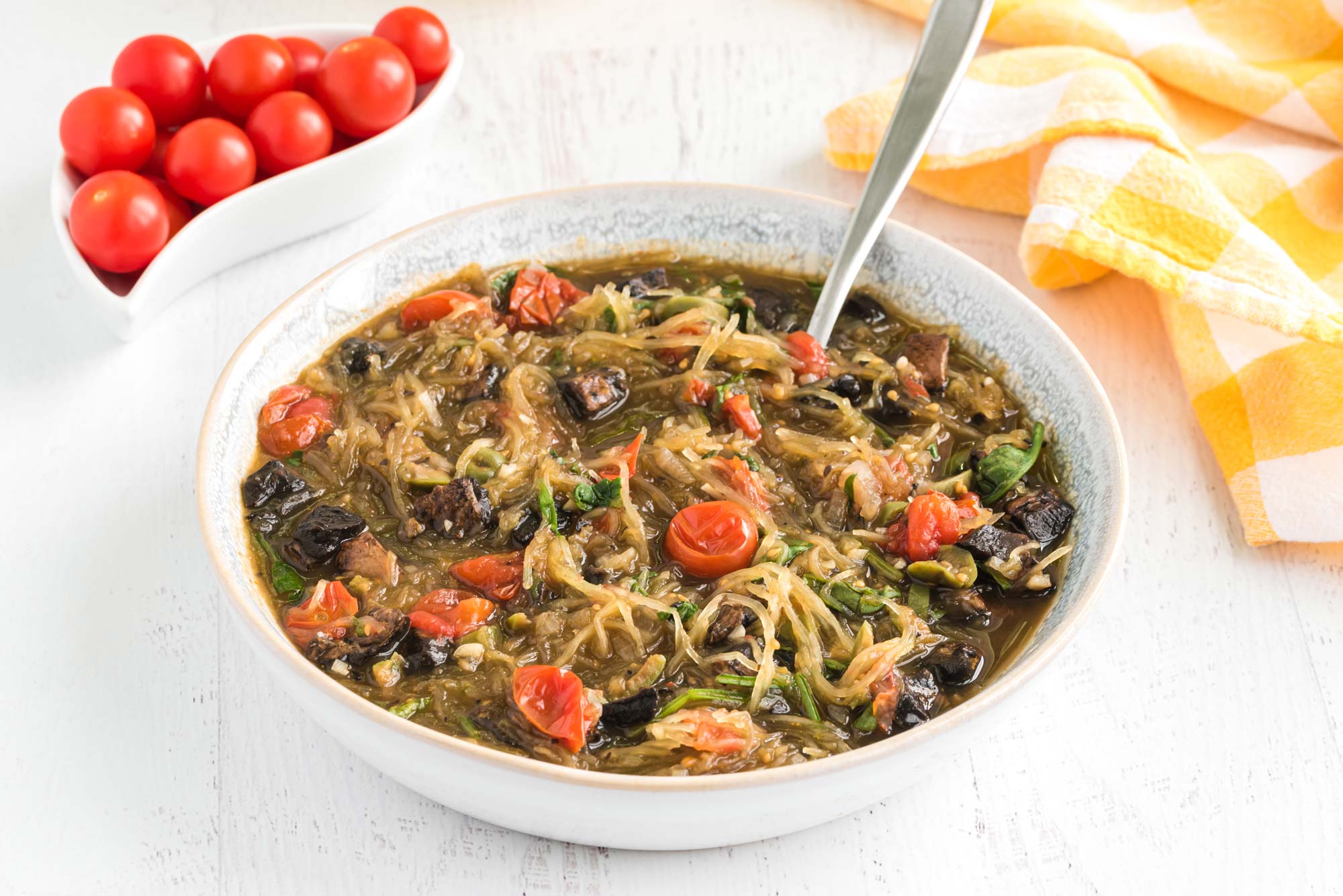
Looking for a pasta-style dish without the heaviness of a pound of pasta? An equal amount of spaghetti squash will leave you feeling light yet still very satisfied! Fresh and bright sauces pair nicely with spaghetti squash, like this vegetable-broth-based garlic, tomato, and mushroom sauce. We love this as a light dish for a warm summer evening or a warming dish for crisp fall nights.
6. Drunken Noodles

While its name sounds woozy, there’s no alcohol to be found in these Drunken Noodles. Don’t be surprised, however, if you get a healthy “buzz” from the nutrient-dense rock stars like broccoli, red pepper, and organic tofu. Unlike alcohol, the warm color in your cheeks will be from the natural antioxidant activity of whole plant-based foods!
7. Miso Shiitake and Bok Choy Soup with Shirataki Noodles
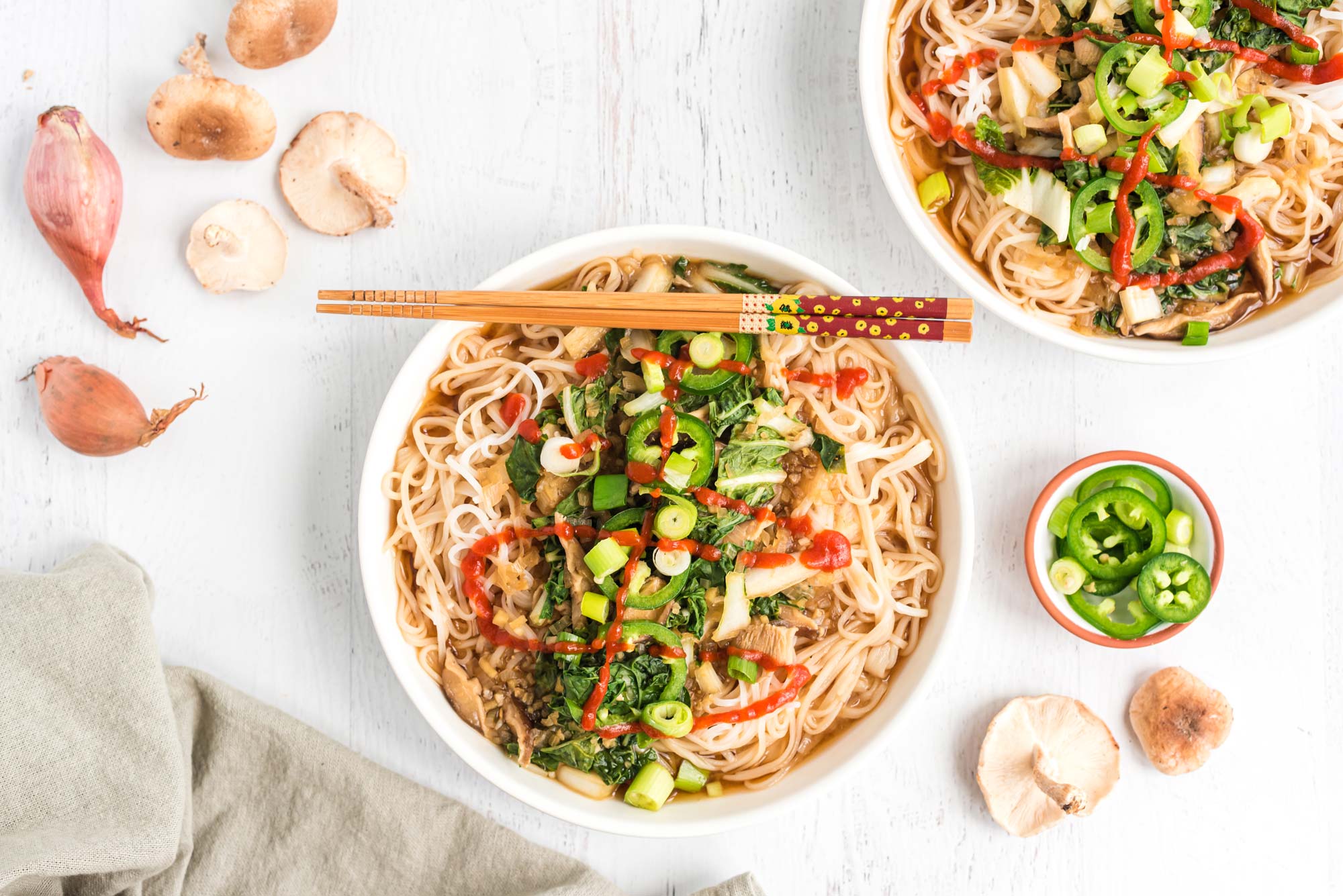
Love noodle bowls? We do, too! Shirataki noodles provide fiber, bok choy provides calcium and other phytonutrients, and mushrooms provide the adaptogenic and immune-supporting nutrients your body needs year-round. This restaurant-worthy bowl is easy to make in the comfort of your own home. Cooler still is that you can add even more vegetables, plant-based protein, and herbs of your choice!
Explore the Wide World of Pasta

Plant-based pasta and noodles can be part of a healthy diet when they’re made from whole grains, legumes, or in some cases, vegetables. Toppings also matter. Steer clear of animal products, unhealthy oils, and excessive sodium and go for whole plant foods and homemade sauces when possible. And spend some time exploring the wide world of pasta; humanity’s love of noodles is one of the things that unites almost all of us!
Tell us in the comments:
- Do you have a favorite pasta dish from when you were a child? Have you tried to make a healthy version, while keeping the flavor and texture you love?
- What non-Italian pasta dishes have you tried?
- What’s your favorite homemade pasta dish?
